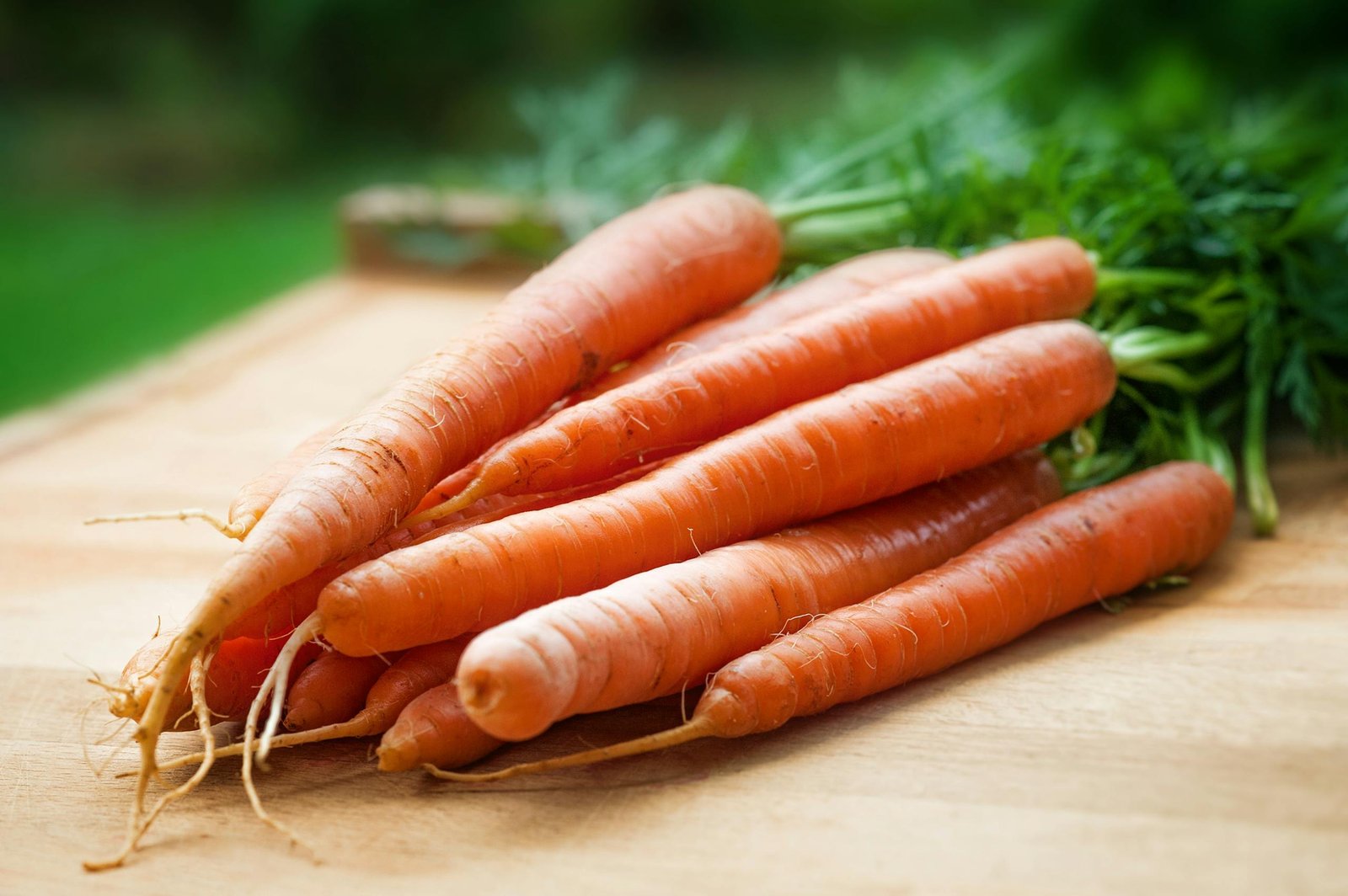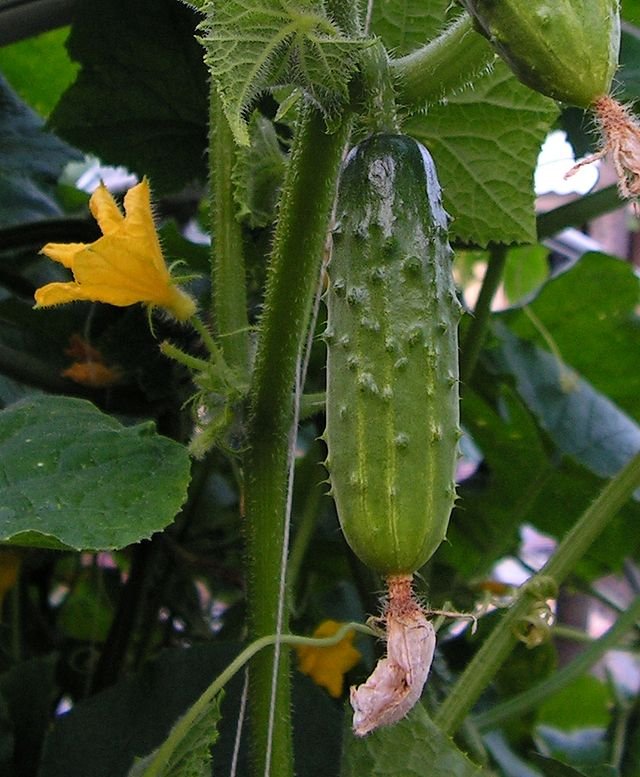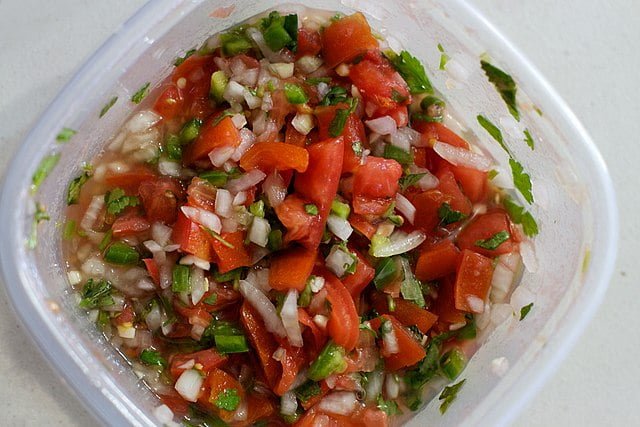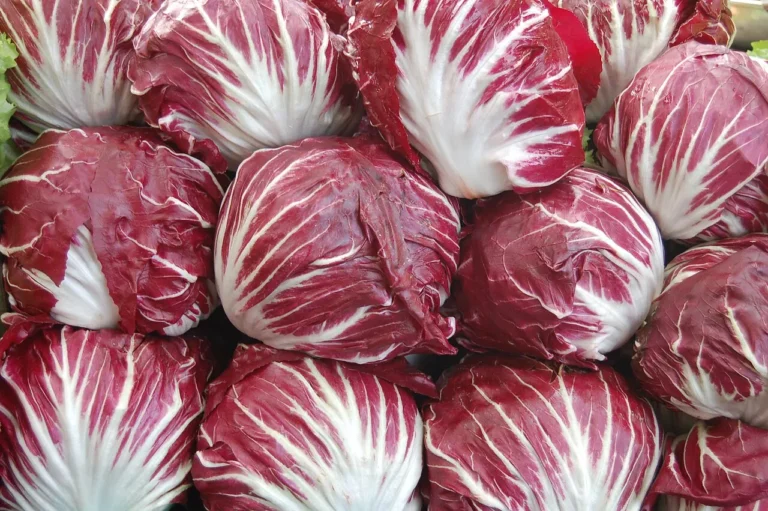Carrots: Cultivating Crunchy and Delicious Roots
Carrots (Daucus carota) are biennial plants that are grown as annuals for their edible roots. They are native to Europe and Southwestern Asia but have been adapted to be grown in many parts of the world. Carrots are beloved not only for their sweet flavour but also for their health benefits, including high levels of beta-carotene, fiber, vitamins, and minerals.
How to Grow Carrots
Choosing Carrot Varieties

There are several varieties of carrots, each with unique characteristics and best suited to different culinary uses and growing conditions:
- Nantes: These carrots are cylindrical and known for their sweetness, making them perfect for snacking and salads.
- Imperator: Longer and more tapered, these carrots are often sold in stores and are excellent for cooking due to their deep flavour.
- Chantenay: Shorter and broader, ideal for growing in heavy or rocky soil.
- Miniature: Small varieties like ‘Parisian’ are great for container gardening.
Soil Preparation and Planting
Carrots thrive in deep, loose, well-drained soil. Heavy or clay soils should be amended with organic matter to improve texture and nutrient content. Avoid using fresh manure or high-nitrogen fertilizers, which can cause carrots to fork and grow hairy roots.
Plant carrot seeds directly in the garden, early in the spring, as soon as the soil can be worked. Sow seeds about 1/4 inch deep, spaced 1-2 inches apart in rows spaced 12-18 inches apart. Keep the soil moist until germination, which usually takes 1-3 weeks.
Caring for Carrot Crops
Carrots require consistent moisture for optimal growth, especially during seedling and root development stages. Mulch around the plants to retain moisture and suppress weeds. Thinning seedlings is crucial to prevent overcrowding and ensure proper root development.
Pest and Disease Management
Common carrot pests include carrot rust flies and aphids, while diseases like leaf blight and root rot can also pose problems. Use floating row covers to protect crops from pests and ensure good air circulation to prevent fungal diseases.
Harvesting and Storing Carrots
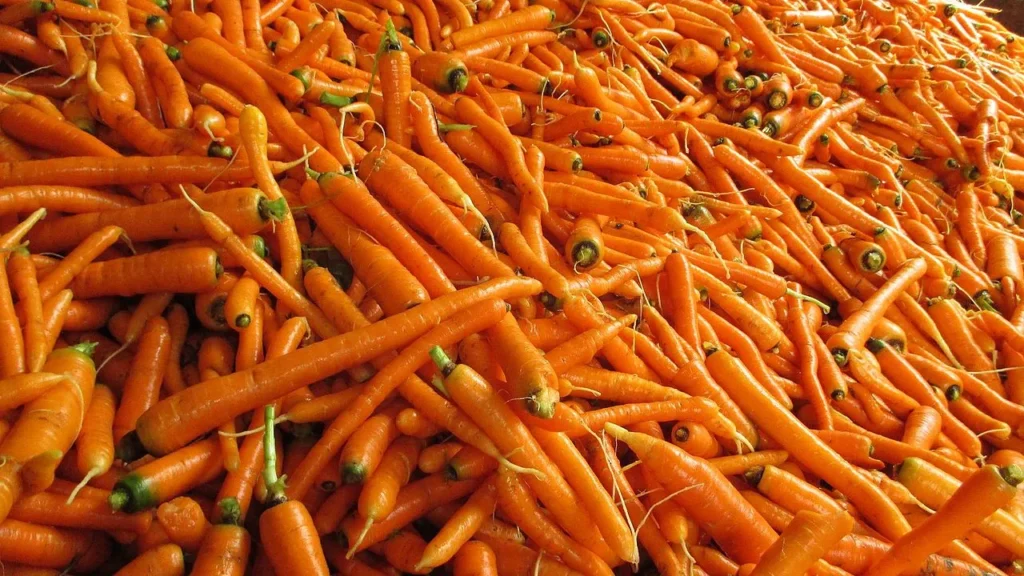
Carrots are typically ready for harvest 2-4 months after planting, depending on the variety. Harvest by gently lifting the carrots from the soil using a garden fork. Store carrots in a cool, dark place, or preserve them through freezing, canning, or pickling for longer storage.
Using Carrots in the Kitchen
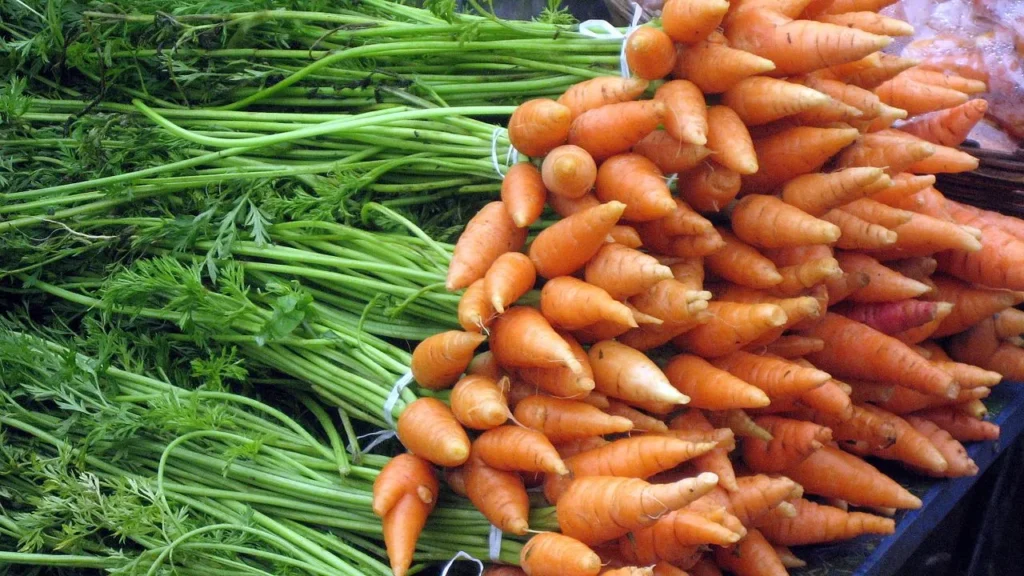
Carrots are incredibly versatile in cooking. They can be eaten raw, roasted, boiled, or used in cakes and pastries. Fresh carrots also make excellent juices and smoothies, packed with nutrients.
Sustainability Practices
Incorporate crop rotation and companion planting (with crops like onions, which can help repel carrot flies) to maintain soil health and reduce pest issues. Organic mulches and manual weeding minimize the need for chemical interventions, making your carrot cultivation more sustainable.
Frequently Asked Questions About Growing Carrots
Additional Resources for Growing Carrots
- The Old Farmer’s Almanac: Provides planting charts, growing tips, and advice on when to plant carrots based on your local climate and the lunar calendar. Visit The Old Farmer’s Almanac
- Royal Horticultural Society (RHS): Offers expert gardening advice, how-to guides for growing carrots, and troubleshooting tips for common problems. Visit RHS
- Local Cooperative Extension: Your local cooperative extension office can provide guidance specific to your area’s soil and climate conditions. They often offer workshops, planting guides, and soil testing services.
- Gardening Books and eBooks: Consider titles like “Carrots Love Tomatoes” by Louise Riotte, which details companion planting techniques that can improve the health and yield of your carrots.
Final Thoughts
Growing carrots in your garden is a rewarding experience that allows you to enjoy fresh and flavourful roots straight from the soil. By following these simple steps, from selecting the right varieties to harvesting and storing your carrots, you can savour the sweet crunch of homegrown goodness. Experiment with different carrot varieties and enjoy their versatility in various culinary delights, from salads to roasted dishes. Get your hands dirty and embark on a carrot-growing adventure today!

